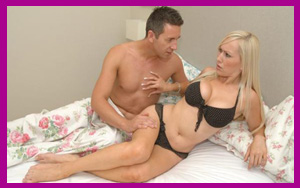INTRODUCTION
 Problems related to sex are common in the life of almost all individuals. Practically everyone has at some time or the other experienced sex related problems. Most of these problems, fortunately, get sorted out by themselves. There are many others about which one may not bother and decide to live with the problem. It has been said that it is easier to treat a sex problem than to admit that you have one. This attitude also results in many problems not coming to light. Problems related to sex are common in the life of almost all individuals. Practically everyone has at some time or the other experienced sex related problems. Most of these problems, fortunately, get sorted out by themselves. There are many others about which one may not bother and decide to live with the problem. It has been said that it is easier to treat a sex problem than to admit that you have one. This attitude also results in many problems not coming to light.
Most sex problems are painless and are not life threatening. This, compounded by the fact that it requires a certain amount of courage to approach a specialist and talk about one's own sex problem, results in only a fraction of problems coming to the medical practitioners. Even if a person wishes to approach a doctor for help, he is not sure whom to approach. Most clinics have hardly any privacy and most physicians are not well equipped to deal with such problems because hardly any training is imparted on this subject during studies. As a result of all this quacks who advertise in all media have a field day. They unfortunately add to the patients' misery.
 CLASSIFICATIONS CLASSIFICATIONS
If we take into consideration only the common sex problems seen in medical practice, they can be classified as follows :
- Those where the individuals are afraid that they will not be able to perform.
- Those where they are able to perform but want something more out of sex.
- Those where they are actually not able to perform.
From the point of view of management of cases it is better to classify them as follows :
- Those who need predominantly education.
- Those who need predominantly counselling.
- Those who need predominantly therapy.
Quite often it is essential to find out whether the cause of the problem is organic or psychological or mixed. It is observed that organic problems tend to get overlaid with an additional functional problem.
COMMON SEX PROBLEMS
Although it is an axiom in sexology that sex problems are couple problems, quite often it is possible to identify one of the partners as needing greater professional attention. It must, however, be remembered that the couple, or marital unit, as it is called, is treated as a unit. In a number of instances only one of the partners is willing to come for therapy. There are also single or separated individuals where the question of involving the partner does not arise.
COMMON SEX PROBLEMS IN MALES
-
Problems arising out of Myths and Misconceptions regarding loss of
semen or 'Dhatu' or what is popularly known as 'Dhat syndrome'. The
person is usually a young man who has severe anxiety about his ability to
 perform sexual intercourse. perform sexual intercourse.
Some cases of suicide in the young are as a result of this phobia. They need a sympathetic listener and proper sex education with a lot of reassurance that they are normal. It is often dangerous to rush them in to marriage, in the hope that once they get married everything will be all right.
- Inhibited Sexual Desire: Absence of libido or diminished libido is one of
the problems that is seen more often now. When asked a pointed question
about sexual desire many males confess to having a low level of desire. It has recently been seen that patients who watch blue films on video almost daily are not interested in sex. Over-exposure to erotic material seems to kill the desire. Easy availability of sex can also kill the desire in those whose main pleasure is in pursuit rather than in actual achievement. There are some others whose lack of desire is due to boredom with routine with the same partner. Some individuals have strong homosexual tendencies which are suppressed due to social and cultural pressures. They have no attraction or often definite repulsion for the opposite sex. This manifests itself as inhibited sexual desire.
 Erectile Dysfunctions: Failure to get an erection, stiff enough for penetration
at the time of sexual intercourse is another common sex problem. In case
the person has never had an erection the problem is called primary. This is
uncommon. Erectile Dysfunctions: Failure to get an erection, stiff enough for penetration
at the time of sexual intercourse is another common sex problem. In case
the person has never had an erection the problem is called primary. This is
uncommon.
Secondary erectile dysfunction where the person reports satisfactory erections in the past but has lost the ability later on is much more common. Secondary erectile dysfunction may be due to some organic causes such as inadequate filling of the corpora cavernosa, or rapid emptying of blood. This may be as a result of vascular blockage or venus leak. It may be a part of other neurological or vascular disorders, especially as a complication of diabetes. The cause may be iatrogenic due to administration of certain drugs like antihypertensives or tranquilisers. Surgical operations in the perineal region may also be the cause.
Erectile dysfunction along with loss of libido may also be a part of psychiatric disorders such as depression of any type. However the commonest type is psychosomatic or situational dysfunction. If the person reports good erections in one set of circumstances and not in other, the dysfunction is unlikely to be organic. If he reports to be having early morning erections while reading or viewing erotica but not when he is required to perform sexual Intercourse, there cannot be any organic cause.
- Ejaculatory Dysfunctions: Ideally the male partner should ejaculate after
the female partner has reached orgasm. Many would even prefer or insist
that both partners should reach their orgasm simultaneously. This is not an
impossibility since it is now known that females are
 multiorgasmic and can
have several orgasms one after the other during a single sexual intercourse.
One of these orgasms could coincide with that of the male. Ejaculation in
male is essential for procreation. Its female counterpart, orgasm, is not essential from this point of view. multiorgasmic and can
have several orgasms one after the other during a single sexual intercourse.
One of these orgasms could coincide with that of the male. Ejaculation in
male is essential for procreation. Its female counterpart, orgasm, is not essential from this point of view.
Three problems with regards to ejaculation can occur in the male. Ejaculation may occur either too early, too late or may not occur at all. Early or premature ejaculation has to be included in any list of common sex problems. Practically all couples at sometime or the other experience it. The definition of this condition has undergone metamorphosis over the years. From the minimum number of seconds of vaginal containment and minimum number of strokes prior to ejaculation, the emphasis shifted to the female partner when Masters and Johnson said that a male may be stamped as a premature ejaculator if he ejaculates prior to his partner reaching orgasm during 50% of coital connections. Helen Singer Kaplan has once again shifted the emphasis to the male partner. According to her if the male ejaculates before he wants to and has no control over his ejaculatory reflex, he is a premature ejaculator. This has brought the act of ejaculation within the realm of a voluntary act, rather than a reflex act.
COMMON SEX PROBLEMS IN FEMALES
- Inhibited Sexual Desire: Frigidity is a word commonly used to describe a
female who has low sex desire. Since sex desire drive between two partners
is a relative entity a woman who may be called frigid by one partner may
be normal for another and over sexed for someone else. Sexual dissonance
between the two partners on the matter of frequency of sexual activity is
common. It is understandable that if a female does not enjoy sex she is
unlikely to ask for it and may even show dislike for it. A proper
understanding of the sexual response cycle and foreplay techniques can
help to improve the situation.
 Sexual desire may get turned off by anxiety provoking demands on the part of the male such as insistence on total nudity, intercourse with lights on, intercourse at a time which she thinks is unsuitable or in a position she may consider unlady like. Some females may not like oral sex or anal sex. Smell of alcohol or tobacco may be enough to turn off some otherwise, sexually active females. All of the above are true also for some males but much more so in females. Sexual desire may get turned off by anxiety provoking demands on the part of the male such as insistence on total nudity, intercourse with lights on, intercourse at a time which she thinks is unsuitable or in a position she may consider unlady like. Some females may not like oral sex or anal sex. Smell of alcohol or tobacco may be enough to turn off some otherwise, sexually active females. All of the above are true also for some males but much more so in females.
- Vaginismus: Fear of physical assault on any part of the body leads to a reflex contraction of the muscles of that part like the abdominal wall or the eyes. This is also true of the muscles around the outer third of vagina. Sudden and forceful attempts at penetration without emotional and physical preparation leads to this reflex especially in those who have no sex knowledge or harbour myths and misconceptions regarding sexual intercourse. One single forceful attempt may result in local trauma making subsequent attempts more painful. A vicious cycle may set in. Gradual desensitisation about this phobia, by reassurance, self dilatation by finger and vaginal dilators and instructions to the male partner to be firm but not rough helps in many cases. Some gynaecologists are reported to be resorting to surgical fpbcedures to dilate the vaginal introitus. However, this seems to be too drastic a procedure.
- Anergagmia: Inability to reach orgasm in a female is not uncommon. Many females report sexual activity as pleasurable but confide that they never climax. It is desirable to exclude all such factors like premature ejaculation in the male, dyspareunia due to any cause and various factors which may turn her off. Graded self stimulation techniques and proper sex education that sex is normal, sex is fun and that it is normal to enjoy sex, helps. Absence of vaginal lubrication indicates lack of excitement. The couple * should be asked to look for this and penetration attempted only when this is present. Use of external lubricants is helpful to allay anxiety. Many men are not aware of the presence and functions of the clitoris. It is a good practice to examine each partner in the presence of the other and at that time explain the names and functions of each part, especially the clitoris.
It is believed that there is no such thing as an aphrodisiac or sex tonic. Sex therapy calls for patience and perseverance on the part of the couple as well as the therapist.
 Premature Ejaculation has been recognised by modern medicine quite recently. Till 1913, this condition was not mentioned anywhere in medical literature. Dr. K. Abraham as perhaps the first to call it ejaculation-praecox. Earlier Victorian physicians were more interested in nocturnal emissions & spermatorrhoea and the 'bad' effects it produced on the mind and body of a person. Kinsey's epoch-making surveys showed that more than 75% of American men ejaculate in less than two minutes after penetration. Premature Ejaculation has been recognised by modern medicine quite recently. Till 1913, this condition was not mentioned anywhere in medical literature. Dr. K. Abraham as perhaps the first to call it ejaculation-praecox. Earlier Victorian physicians were more interested in nocturnal emissions & spermatorrhoea and the 'bad' effects it produced on the mind and body of a person. Kinsey's epoch-making surveys showed that more than 75% of American men ejaculate in less than two minutes after penetration.
Definition of premature ejaculation by American Psychiatric Association and DSM-IV is given as 'persistent or recurrent ejaculation with minimal sexual stimulation that occurs before, during or shortly after penetration and before the person wishes it.' The clinician must take into account factors that affect duration of the excitement phase, such as age, novelty of sexual partner or situation and recent frequency of sexual activity.
This definition has variables like the word 'minimal' and a description of timing that cannot be standardised. A man may be perfectly happy if he ejaculates within half a minute whereas another may be unsatisfied even if he ejaculates after half an hour of coital activity. The definition also places emphasis on the man's subjective feelings totally disregarding the female. In India, our very own Kama-Sutra regards this condition as a normal variation.
Here Vatsyayana outlines the ejaculatory response at three levels of duration or 'kala' in Part II, chapter I, Sutrats 17 - 71. In both men and women, the 'duration of lasting' or Kala is given as short-timed, medium-timed and long-timed. This is also very well described in Kokashastra or Rati Rahasya. Here Pandit Kokka gives the three variations in men and women as per the duration for which the sexual act lasts. He classifies them as immediate, intermediate and 1 delayed. According to him, this is just a variation and he suggests ideal combinations for men and women based on this Kala.
WHY PREMATURE EJACULATION? WHAT IS IT ''PREMATURE' TO?
It could be so called because due to the early ejaculation there is only partial experience of sexual pleasure on part of the man which is followed by a refractory period wherein the man cannot get his interest and  erection in sex for some period of time which is variable in different men. This results in the woman feeling unsatisfied as she is unable to experience her climax within that much period. Why did this issue of premature ejaculation come up? Animals do not seem to have premature ejaculation. This question has perhaps originated because of the 'pleasure' component in human sexual activity. Helen Kaplan, a well-known researcher, has given instances wherein she reports of cases where the process of ejaculation occurs without any pleasure whatsoever. This could be attributed to the current thinking that orgasm and ejaculation are two different phenomena. As a result, men arid women often complain of experiencing partial pleasure that is perceived only in the genitals and not in the mind. Some authors feel that this occurs because of inhibition at both emission and expulsion phases. Emotional inhibiting factors from the amygdala and the hippocampus in the brain may also play an important role. This negative conditioning of the society about sexual pleasure, masturbation or moral values of sexual activity are significant (e.g. pre-marital and extramarital sex). Some believe that sexual contact was in itself the first sin. Hence sex is considered as immoral and it results in considerable guilt and shame which can adversely affect a persons' sexual behaviour. erection in sex for some period of time which is variable in different men. This results in the woman feeling unsatisfied as she is unable to experience her climax within that much period. Why did this issue of premature ejaculation come up? Animals do not seem to have premature ejaculation. This question has perhaps originated because of the 'pleasure' component in human sexual activity. Helen Kaplan, a well-known researcher, has given instances wherein she reports of cases where the process of ejaculation occurs without any pleasure whatsoever. This could be attributed to the current thinking that orgasm and ejaculation are two different phenomena. As a result, men arid women often complain of experiencing partial pleasure that is perceived only in the genitals and not in the mind. Some authors feel that this occurs because of inhibition at both emission and expulsion phases. Emotional inhibiting factors from the amygdala and the hippocampus in the brain may also play an important role. This negative conditioning of the society about sexual pleasure, masturbation or moral values of sexual activity are significant (e.g. pre-marital and extramarital sex). Some believe that sexual contact was in itself the first sin. Hence sex is considered as immoral and it results in considerable guilt and shame which can adversely affect a persons' sexual behaviour.
Multiple factors may be responsible for a man to experience a premature ejaculation. Some common causes cited are :
- Excessive excitement in earlier sexual experiences
- Sexual abstinence
- New partner
- New setting, surrounding
- Extremely responsive and assertive partner
- Early experiences with friends or sex workers wherein the man is pressurised to ejaculate as early as possible
- Anxiety states like,
- Will I ejaculate too fast?
- Will I be able to satisfy my partner?
 Marital disharmony with hostility towards partner Marital disharmony with hostility towards partner
TREATMENT OF PREMATURE EJACULATION
Various researchers have advocated different approaches for the treatment of premature ejaculation. These could be classified as:
I Behavioural
a. Start-stop Method
b. Squeeze Technique
II Pharmacological
I BEHAVIOURA
a. Semans 'start-stop' method

J.H. Semans was the first to offer treatment for this condition which he called - the 'start-stop' technique. Dr. Helen Kaplan developed it extensively and used it to treat men with poor ejaculatory control, and who lacked the help of a sexual partner. In Indian conditions this method is useful as men are often reluctant to involve their partners in sex therapy.
These exercises are useful if done with some degree of regularity. Mental and physical fatigue will act as constraints and it's imperative to have proper privacy and leisure time which is rather difficult in today's circumstances.
Step 1 Self-Exploration
Here the man learns about his sensual areas of the body in an unburdened and unregulated manner. When he is rested and relaxed, he undresses and lies on the bed. Using the fingertips, he touches different parts of his body starting with the face. This touching exercise is then extended to the neck, arms, shoulders, chest, abdomen, etc. Different strokes are to be tried out and tested for their sensitiveness.
The stimulation of the penis and the scrotum is done intermittently and with varying degree of pressure. Using different types of strokes and grips on the penis, the man learns to become aware of his pleasurable feelings. As this is only an exploratory test, the man is advised not to masturbate to the point of ejaculation on this occasion as sexual turn-on is not what is desired but being aware of the pleasure of touch is crucial.
 Step 2 Self-Stimulation Step 2 Self-Stimulation
Here the beginning is like the previous step wherein initially non-genital stimulation is done for about 10-15 minutes. After the man feels relaxed and is sufficiently aroused, he has to stimulate his genitals. This should be intermittent with other areas of the body also being touched. Being aware of the sensations generated within the body is important and so is the sensory focus on the genital areas which include the penis, scrotum, perineum, inner thighs etc. As the, stimulation is increased, the man will start feeling sufficiently aroused to achieve a good erection. At this stage he has to deliberately slow down the tempo of stimulation for about 10-15 seconds and then resume. After doing it 2-4 times, he can let go and ejaculate whenever he wants. During the ejaculatory process he has to concentrate his attention on the physical sensations just before ejaculation occurs. This is the point of ejaculatory inevitability.
Step 3 Introducing the Stop-Start Method
Following the practice of steps 1 and 2 for a few days, a change in pattern of stimulation is introduced. It involves deliberate total stopping of stimulation for about 10-15 seconds much before the level of high arousal is reached. After a slight loss of erection the stimulation is restarted. Slowly he has try to come as near as possible to the point of ejaculatory inevitability and then stop - so that the urge to ejaculate disappears. The 'stop' phase may have to be increased in highly sensitive subjects. Some men may lose control and ejaculate but this teaches them to stop slightly earlier when they do the exercise next time. If ejaculation does occur the exercise is terminated.
He has to be able to control himself for 3-4 such occasions, and then the stimulation is continued to the point of ejaculation. At this stage the man has to concentrate on the pleasure aspect rather than trying to time himself as that may act as a distraction during climax. This procedure is to be repeated a number of times and it's only then that the man will slowly learn to control his ejaculation.
 Step 4 Stop-Start Method with Lubrication Step 4 Stop-Start Method with Lubrication
Some men tend to ejaculate prematurely only during sex. The reason attributed is that this probably occurs due to the enhanced sensitivity as a result of the wetness within the vagina due to lubrication. To enable a man to have this increased sensitivity during masturbation, this step of the exercise advocates the use of a non-alcoholic, water-soluble lotion or jelly. These small changes are quite important as they mimic the factors that occur during sexual intercourse.
Step 5 Stop-Start Method with Lubrication and Fantasy
Some men masturbate only by using the physical stimulus and their minds concentrate only on the pleasure aspect that they derive from penile stimulation. During sex, the presence of a partner is excessively stimulating which is sometimes a contributing factor for a premature ejaculation. For such men, adding a fantasy of their choice during the exercise enables them to simulate a real life situation and hence achieve still greater control. Drawback of the Seman's method.
As the exercises induce a man to masturbate, many men with religious or personal anti-masturbation beliefs are not able to follow them. In addition, the concept of 'Brahmacharya' introduced by various religious leaders has had a profound effect on Indian society. Hence this method is not acceptable to every one. Proper counselling is extremely essential before this method can be advocated to anyone.
b Squeeze Technique
 Masters and Johnson advised the innovative squeeze technique to stop the ejaculatory response. Based on detailed history taking, they devised a unique couple therapy where there is a graded increase in sexual stimulation and called it 'Sensate Focus Method'. According to them, many couples are able to cope successfully with reconditioning the man's sexual response on their own so that sex becomes more relaxed and fulfilling. However in some situations, sex therapy is the best solution rather than trying a self help, program.
The squeeze technique demands the involvement of a co-operative
partner whose role is to periodically apply a specific type of a non
stimulatory pressure to the penis from early stages of sexual arousal to
the pre-ejaculatory state. It interrupts the ejaculatory response so that
the man slowly learns to achieve control. They state that most men do
not benefit from trying to use the squeeze technique on themselves. It
works only when the man doesn't try to direct the action or instruct his partner as to when and how firmly to squeeze. This is the method advocated by Masters and Johnson. Masters and Johnson advised the innovative squeeze technique to stop the ejaculatory response. Based on detailed history taking, they devised a unique couple therapy where there is a graded increase in sexual stimulation and called it 'Sensate Focus Method'. According to them, many couples are able to cope successfully with reconditioning the man's sexual response on their own so that sex becomes more relaxed and fulfilling. However in some situations, sex therapy is the best solution rather than trying a self help, program.
The squeeze technique demands the involvement of a co-operative
partner whose role is to periodically apply a specific type of a non
stimulatory pressure to the penis from early stages of sexual arousal to
the pre-ejaculatory state. It interrupts the ejaculatory response so that
the man slowly learns to achieve control. They state that most men do
not benefit from trying to use the squeeze technique on themselves. It
works only when the man doesn't try to direct the action or instruct his partner as to when and how firmly to squeeze. This is the method advocated by Masters and Johnson.
Step 1 Learning to squeeze
 For doing the squeeze technique, the woman has to put the pad of her thumb on the frenulum of the penis while placing the first and the second fingers of the same hand on the opposite side of the shaft parallel to each other. These are placed slightly lower the coronal ridge. The woman then firmly squeezes the penis for about four seconds and lets it go. Factors to be remembered are : For doing the squeeze technique, the woman has to put the pad of her thumb on the frenulum of the penis while placing the first and the second fingers of the same hand on the opposite side of the shaft parallel to each other. These are placed slightly lower the coronal ridge. The woman then firmly squeezes the penis for about four seconds and lets it go. Factors to be remembered are :
- Avoid pinching or scratching with fingernails.
- Pressure from front to back and not side to side.
- Only pads should be used and the complete finger is not to be wrapped around.
- Proper pressure is essential. More if, it is firm, less if flaccid. Suitable instructions essential.
- For the early experimenting, it's better if the man guides the woman by keeping his hand over hers.
- Pressure should be firm enough so that erection is lost in the process.
Step 2 Using the squeeze during sex play where man is passive
 Here the couple ii advised to purposefully indulge in sex-play for about 20-40 minutes. Here the degree of excitement is purposefully allowed to remain low and the squeeze is applied about 3-6 times during the whole encounter. Erection of the penis is not considered important. Some points to be noted are : Here the couple ii advised to purposefully indulge in sex-play for about 20-40 minutes. Here the degree of excitement is purposefully allowed to remain low and the squeeze is applied about 3-6 times during the whole encounter. Erection of the penis is not considered important. Some points to be noted are :
- An excessively sensitive man ejaculate immediately after a woman touches his penis.
- The-woman should actively 'play' with the penis between two squeezes.
- Ejaculating despite the squeeze is considered normal.
- Initially, it is better to avoid any type of lubrication as it is counterproductive.
- The squeeze is to be kept separate and discreet from other type of foreplay.
Step 3 Using the squeeze during sex play where both are active
Here the variation is that they have to take turns so that the degree of stimulation for the man is now greater. Masters and Johnson strongly suggest that couples should do this step for at least three times before they move to the next step. It helps to develop physical and psychological comfort between the couple with prolonged non-coital sexual stimulation. It also aids in annihilating the performance anxiety of the man as the periodic squeezes assist in preventing premature ejaculation.
 Step 4 Genital-to-Genital touching Step 4 Genital-to-Genital touching
This is an essential step to make the man feel at ease wherein genital contact is established without a complete intercourse. After going through the initial steps as described above without ejaculation, the woman has to sit astride her partner, apply the squeeze and then get her vagina in close proximity to his penis. She has to use non-genital stimulation along with firm squeezes to the penis. She has to initiate the first direct contact with the vaginal lips immediately after a squeeze.
Some men tend to lose control at this point. Whether or not this occurs, the purpose of this exercise is to allow the man to feel comfortable with direct penis-vagina contact. It proves to be a learning experience for the man. In case he does not ejaculate the couple can proceed to the next step immediately.
Step 5 Woman in Control Intercourse position
Now the woman is encouraged to sit astride with the man lying on his back. She has to intermittently use the squeeze on five to six occasions before attempting to insert the penis in her vagina. Use of some lubricant to stimulate the penis is advised. Once erection without ejaculation is achieved for a satisfactory period of time, she squeezes the penis and inserts it in her vagina. She has to sit still without any movements and both have to focus on their physical sensations.
It's imperative that the woman be in total control during this process. After the man is able to control ejaculation, at the end of 15-20 seconds, the woman removes the penis and applies the squeeze once again and reinserts the penis. Now, after staying still for some more time, she begins a slow thrust pattern. \ Gradually, over a period of time, the thrusting speed is increased along with the time. It is normal to expect a few failures wherein the man may ejaculate prematurely, but slowly over a period of time, he learns to control himself.
BASILAR SQUEEZE
The standard squeeze involves pressing the penis near the glans which means interruption during penetrative sex.
Masters and Johnson devised a modified version of the squeeze to overcome
this problem. They called it the basilar squeeze. This involves the pressing of
the penis at the point where it joins the scrotum. It can be applied by either partner and hence the man is more at ease as he can squeeze at the correct movement.
The squeeze is to be maintained for 4-8 seconds similar to the earlier method. They admit that it should not be used as an alternative to the standard method as it is not as effective.
 Important Considerations for this therapy : Important Considerations for this therapy :
- Time and repeated practice is essential to achieve ejaculatory control.
- 'Refresher course' is required if gains made earlier are lost /hie to lack of time.
- Do not expect total control each time. Some 'failures' are bound to occur.
- Change of position i.e. woman-on-top to side-by-side to man-on-top is to be done slowly over a longer period of time and failures are to be expected in the initial stages.
One of the major problems faced before entering into this therapy is that 'other' issues have to be resolved. They are: dislike for each other, anger, alcohol, tobacco or drug abuse, infidelity, distrust, mental or physical torture, economic strain, etc. Medical conditions also have to be diagnosed and treated properly. In India, motivating the man to come and openly discuss these issues with his partner is very difficult.
II PHARMACOLOGICAL
The first choice as mentioned before is behavioural but pharmacotherapy can be concurrently used for better results.
 1. ANAESTHETIC AGENTS 1. ANAESTHETIC AGENTS
Excessive sensitivity of the penis especially the glans has been thought to be one of the causes of premature ejaculation. Local anaesthetics have been used with the intention of reducing sensory input from the penis thereby delaying ejaculation. Dibucaine, Benzocaine, Nupercaine, and Lidocaine which are available as sprays, gels, etc. have been tried and effective for use as a male genital desensitizer. They are sold as over-the-counter products all over the world and many patients have usually tried it before coming for professional advice. It may also result in anaesthetic action causing desensitisation of the vaginal wall resulting in impairment of orgasmic response in the woman.
2. PSYCHOTROPIC DRUGS
A number of such drugs have been tried and found to be useful in management of premature ejaculation. Monoamine oxidase inhibitors (MAOFs) are. effective but they have many side effects and interactions with common foods. Thioridazine was tried but it too caused side effects like delayed, absent or retrograde ejaculation.
Selective Serotonin Reuptake Inhibitors (SSRI's) cause delayed or absent ejaculation. Now-a-days Clomipramine, Fluoxetine, Sertaline are advocated for treatment of premature ejaculation. These agents are quite effective in delaying ejaculation but loss of libido is a common side effect after using them.
Other drugs tried were propranolol, labetolol, phenoxybenzamine by different researchers but they were either ineffective or caused a number of side effects.
 RETARDED EJACULATION RETARDED EJACULATION
Retarded ejaculation is defined as the man being able to ejaculate only after what seems to him (and his partner) to be an 'excessive' period of time. It is usually reported when the man requires 1/2 an hour or more of vigorous coital thrusting. It is interesting to note that most of these men do not seem to have any difficulties with erection but something seems to hold them back and they are unable to trigger the ejaculatory reflex at the proper time. This is a very common symptom in men who. are regular abusers of recreational drugs or alcohol. The usual story from the couple is that the woman becomes weary and uninterested once she has had her orgasm and the man becomes tired, exhausted and fatigued which is frustrating for the couple. Sex ceases to be an enjoyable and fun-filled activity and is looked upon as 'work'. The woman becomes impatient and urges her partner to 'come' quickly which burdens him further. As she loses interest in sex. the vaginal lubrication becomes less and the dryness results in irritation which ultimately leads to dyspareunia.
TREATMENT
A three step process is useful in treating delayed ejaculation
- Teaching masturbation to the point of ejaculation as a solo activity
- Masturbation to the point of ejaculation with a partner
- Finally, coital connection with ejaculation to be established
 This is easier said than done and the following aspects have to be considered. This is easier said than done and the following aspects have to be considered.
- Allay fears, anxieties and myths about masturbation in both partners.
- Liberal use of lubricating jelly during masturbation.
- Mechanical means of stimulation with vibrators is useful (also called super-stimulation which should initially be used for short periods, with a gradual increase in time).
- Encouragement of the partner to stimulate the penis with sufficient force and speed as many men use vigorous stimulation which the female may not understand.
- Use of fantasy to evoke psychological stimulus as many men 'use' only mechanical arousal methods.
- Those who cannot fantasise, could be advised to use erotic videos.
- Drugs like midodrine may help.
CONCLUSION
Premature ejaculation and retarded ejaculation are conditions which require the patients to follow the guidelines  given by the doctor with some dedication. The self help programmes are successful in some cases. Sex therapy is a better alternative as it is possible for the patient to understand where he has gone wrong and expert guidance is always better. Drug therapy is good for short term purposes. Despite this, approximately 20-25% of men with premature ejaculation are still unable to achieve control. In such cases other factors may be responsible. For example, some men simply do not understand the basics of human sexual response. Others do not even want to try and give various reasons like lack of time, lack of privacy (which could be genuine) etc. Few men tend to lose control due to excessive excitement. Some are abusers of drugs or alcohol. One of the main stumbling blocks is the religious and cultural anti-masturbation attitude. Motivation, will and patience of the individual or the couple is an extremely vital factor that decides the final outcome of the treatment. To end, we have to decide whether premature ejaculation is just a variation in the ejaculatory response as described in the old Indian books of Kama-Shastra, or is it a condition that requires treatment. Although many men ejaculate prematurely, only very few are able to realise this and still fewer are willing to take therapy for this problem. given by the doctor with some dedication. The self help programmes are successful in some cases. Sex therapy is a better alternative as it is possible for the patient to understand where he has gone wrong and expert guidance is always better. Drug therapy is good for short term purposes. Despite this, approximately 20-25% of men with premature ejaculation are still unable to achieve control. In such cases other factors may be responsible. For example, some men simply do not understand the basics of human sexual response. Others do not even want to try and give various reasons like lack of time, lack of privacy (which could be genuine) etc. Few men tend to lose control due to excessive excitement. Some are abusers of drugs or alcohol. One of the main stumbling blocks is the religious and cultural anti-masturbation attitude. Motivation, will and patience of the individual or the couple is an extremely vital factor that decides the final outcome of the treatment. To end, we have to decide whether premature ejaculation is just a variation in the ejaculatory response as described in the old Indian books of Kama-Shastra, or is it a condition that requires treatment. Although many men ejaculate prematurely, only very few are able to realise this and still fewer are willing to take therapy for this problem.
Successful outcome is possible only in a motivated couple where one of the partners is sexually unsatisfied after intercourse. However it is imperative that the man is willing to make an effort to overcome the problem. |







